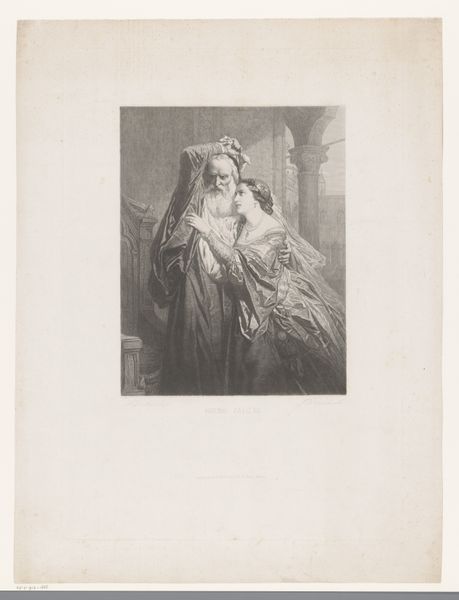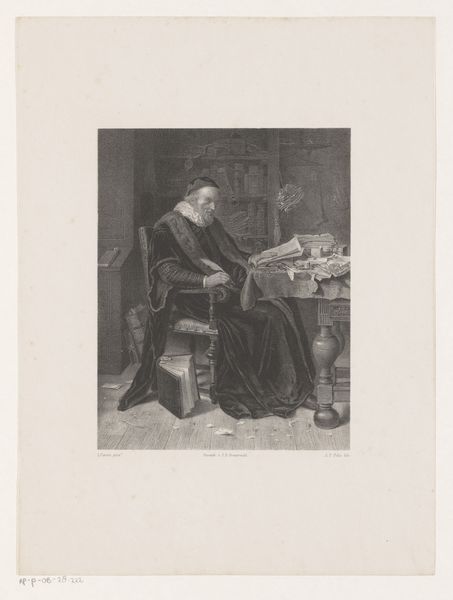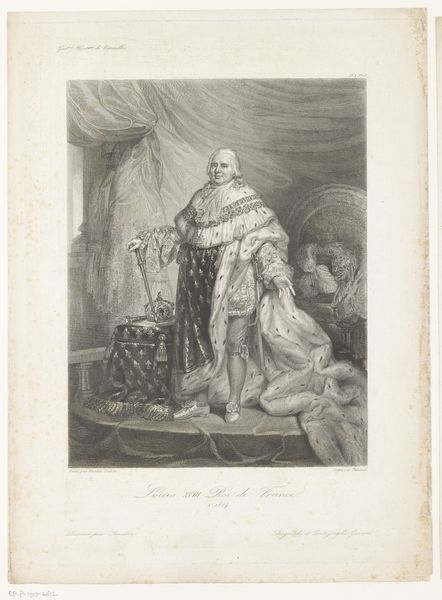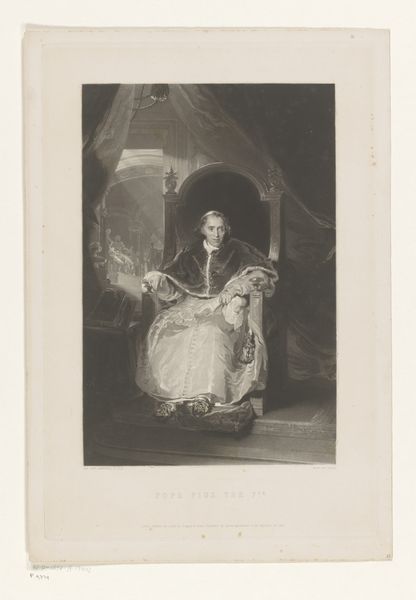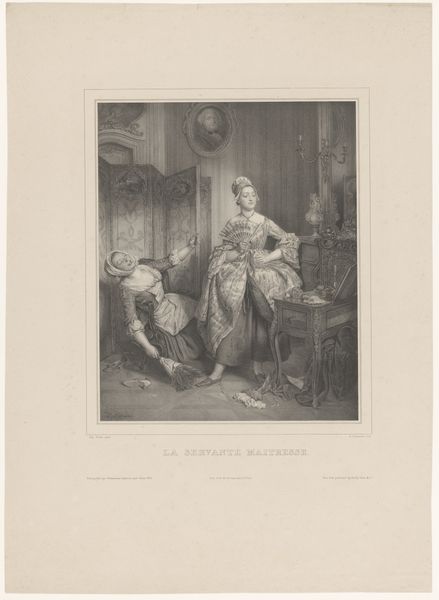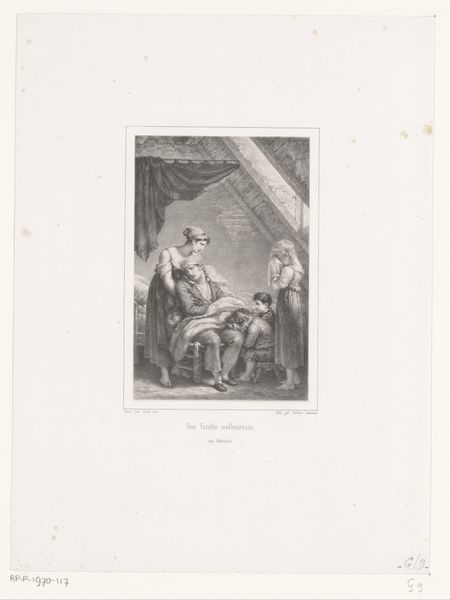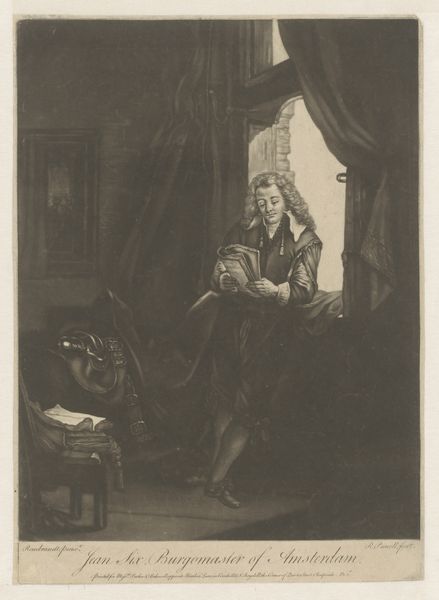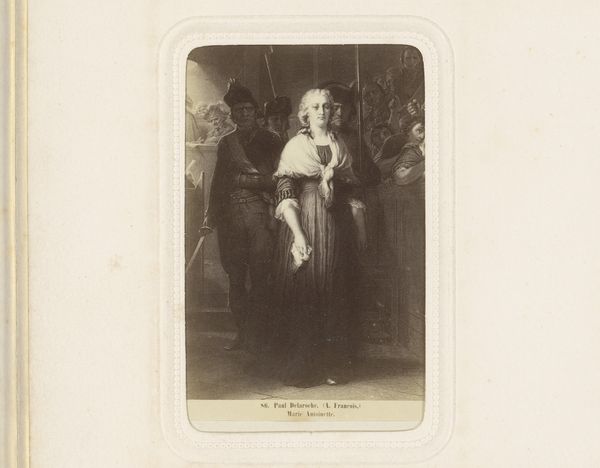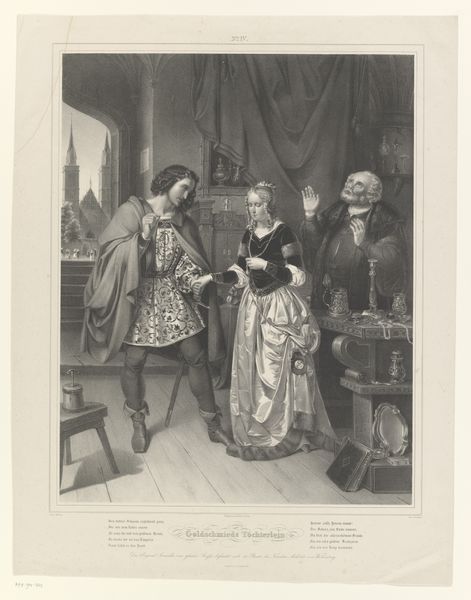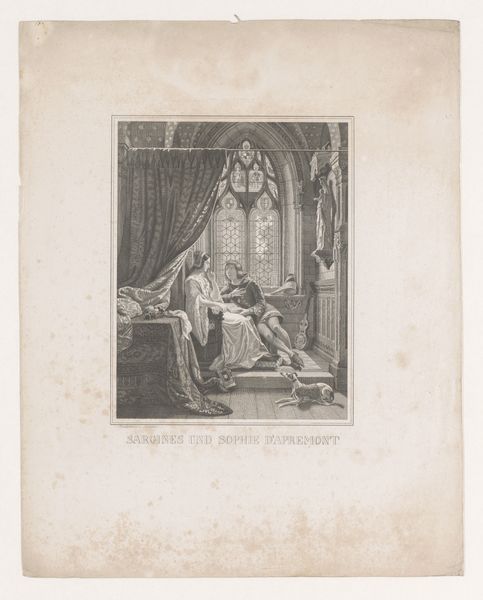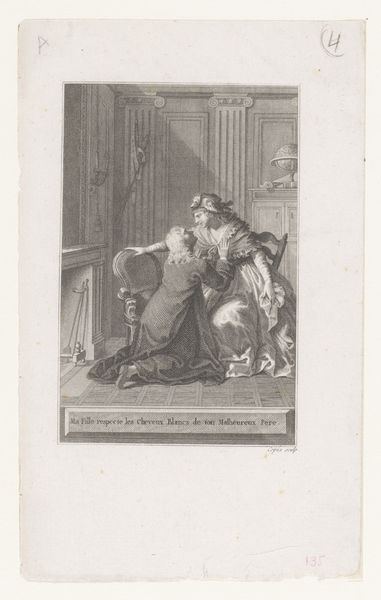
print, engraving
#
portrait
#
neoclacissism
# print
#
history-painting
#
engraving
Dimensions: height 413 mm, width 277 mm
Copyright: Rijks Museum: Open Domain
Curator: Here we have Charles Edward Wagstaff’s "Portret van Ercole Consalvi", dating from around 1840 to 1844, rendered in the precise and elegant medium of engraving. Doesn't he look imposing? Editor: Intensely. And quite lonely, wouldn't you say? The somber tones almost swallow him despite his cardinal robes. I immediately think about power and the cost it extracts. Curator: That's an interesting perspective. Wagstaff situates him in a grand setting – note the neoclassical architecture visible behind the curtain, a kind of power dressing for the backdrop! Editor: Precisely! It screams Neoclassicism, a calculated connection to historical power, an attempt to legitimize its own. How successful, though? Is this really about elevating Consalvi, or about using him? Curator: Oh, I don't know if I’d jump to conclusions. Though you might have a point considering the period's obsession with history painting, using figures like Consalvi to evoke certain emotions, maybe nostalgia? Editor: Nostalgia for an era of aristocratic rule, perhaps? Let’s not forget Consalvi's historical role – a powerful cardinal deeply involved in Vatican politics. This isn't just a pretty picture; it's a statement about authority. Curator: Absolutely! Look at how his hands are rendered; they convey such delicate authority and perhaps offer us a glance into the personality behind the red hat? Maybe he had his secrets... who knows! Editor: His pale complexion definitely contributes to that air of mystery. Given that Wagstaff opted for printmaking, accessible to a wider audience, it raises questions. Was the intent celebratory, or more about reinforcing certain power dynamics among the public? Curator: Now you're getting me all excited! Whatever Wagstaff’s motivations were, this artwork is a stunning meditation on how we perceive authority figures. And isn't it incredible how a simple print can spark so much thought? Editor: Indeed! And remind us that portraiture, regardless of era, are not ever truly neutral representations. Curator: Nicely put. Food for thought. Editor: Exactly.
Comments
No comments
Be the first to comment and join the conversation on the ultimate creative platform.
